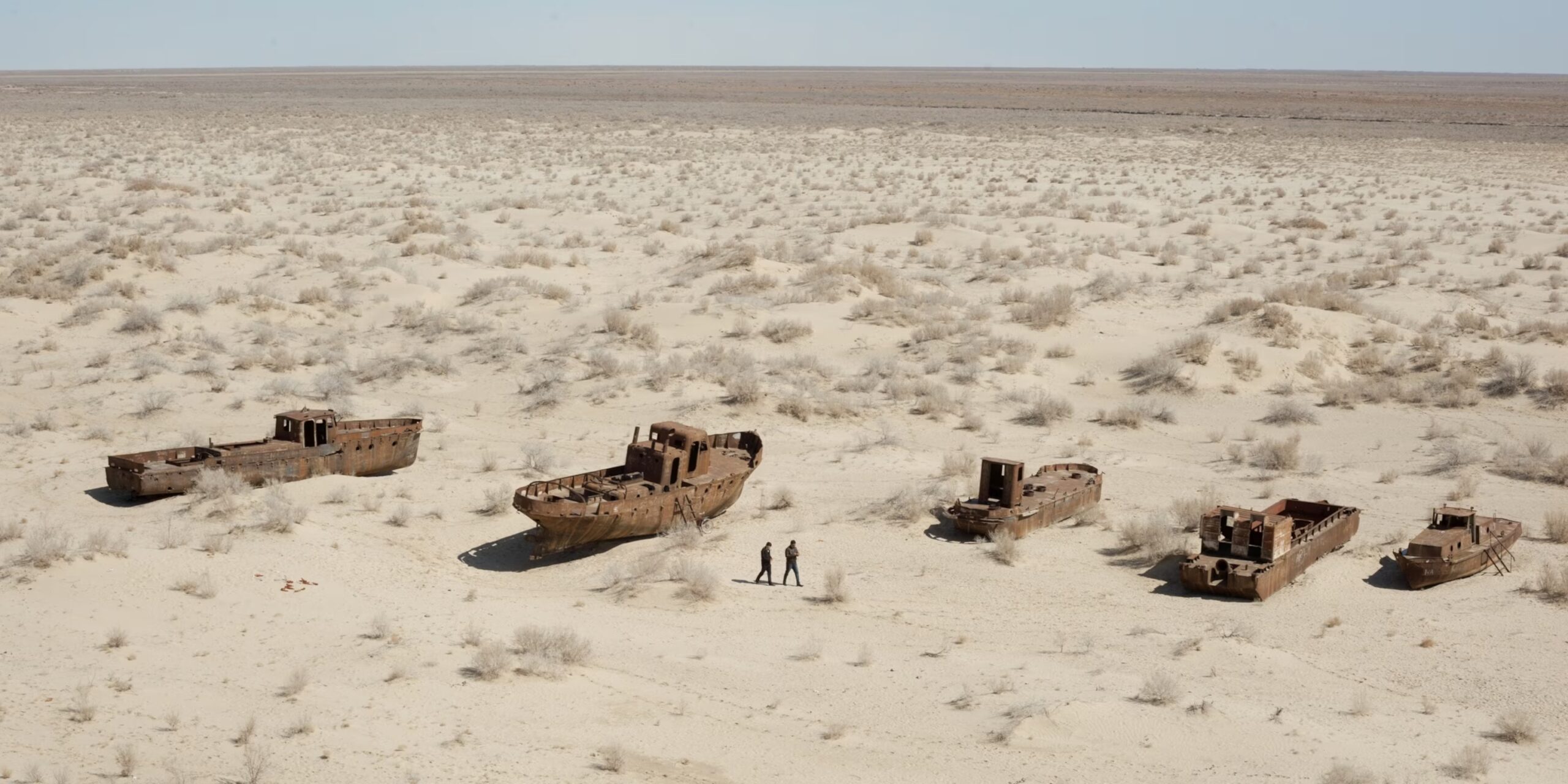BONN—Altai glacier melting is worsened by sand and dust storms blown thousands of kilometers from the Aralkum desert, scientists say at a seminar for journalists in Bonn dedicated to the United Nations (UN) Desertification and Drought Day, marked annually on June 17.

Photo credit: Carolyn Drake, Nat Geo image collection
Scientists studying Eurasia’s vast glaciers and salt and dust portable from Central Asia to the countries of Transcaucasia say sand is seeping into the weak spots of glaciers, worsening melting caused by rising temperatures.
Tatiana Kuderina, senior researcher at the Institute of Geography of the Russian Academy of Sciences, uses satellite images to show the behavior and structure of ice, making it easier to get granular details.
“As you can observe, in our winter period, when our territory is covered with snow, and is frozen, dust from the southern parts of Eurasia is transported to long distances, almost to the Arctic, and lays on the snow cover. The snow cover sort of absorbs it and the quality of surface water deteriorates. If all this gets to mountainous areas, glaciers start to melt,” said Kuderina.
“We worked in Altai – dust from the Aral region and Betpakdala (desert in south Kazakhstan) practically arrives on Belukha (the highest peak of the Altai mountains in Russia). And it is very strongly felt on the glaciers of Altai: they begin to melt and the dust lies in such a dark yellow cover and intensifies the melting of glaciers,” she added.
According to Lyudmila Kiktenko, an environmental program manager at the Regional Environmental Centre for Central Asia (CAREC), Central Asia is a region prone to sand and dust storms as well as land degradation and desertification.
“If you look at the region, more than 80% of Central Asia is covered by desert. In combination with the influence of climate change and prolonged droughts, naturally, this whole area becomes a natural source of sand and dust storms,” she said.
“In our region of Central Asia, sandstorms occur 90 days a year, 90 times they happen in our countries,” she added.
With the fast decline of the Aral sea, once the fourth largest lake in the world, the salinities, dust and soil are blown thousands of kilometers, and are settling on ice sheets, adding to glacier melt threat.
“The desiccation of the Aral sea led to the creation of a new salt desert. And now this territory of 5.5 million hectares is the source of another 100 million tons of toxic salt dust. Salts from the Aral sea region are found on the coast of Antarctica, on glaciers in Greenland, in Norwegian forests, and other regions of the globe,” said Kiktenko.
30 years of UN Convention to Combat Desertification
This year’s UN Desertification and Drought Day coincides with the 30th anniversary of the UN Convention to Combat Desertification (UNCCD), the sole global agreement dedicated to sustainable land management ratified by 196 countries and the European Union.

UNCCD Executive Secretary Ibrahim Thiaw during opening speech at the UNCCD’s 30th anniversary celebration event in Bonn. Photo credit: UNCCD
At a celebratory event in Bonn, UNCCD Executive Secretary Ibrahim Thiaw highlighted the role of the convention in land stewardship.
“In 1994, the world community sent a clear signal by adopting the only legally binding treaty promoting good land stewardship. Today, UNCCD is the world’s foremost platform where governments, businesses and civil society organizations come together to discuss present day challenges and chart a sustainable future for land. Our ambition for 2024 is clear: to make it a landmark year for addressing land and drought issues, especially as we approach the UNCCD COP 16 (Conference of Parties) in Riyadh, Saudi Arabia, in December,” said Thiaw.
Land degradation affects up to 40% of the world’s land and nearly half the world’s population, with the highest costs borne by those who can least afford it: indigenous communities, rural households, smallholder farmers, and especially youth and women.
“By 2050, 10 billion people will depend on this vital resource. Yet we are losing the equivalent of four football fields to land degradation every second,” said Thiaw.
In Central Asia and Mongolia, 60% of the land area is used for pasture, while pastoralism supports almost a third of the region’s population.
At Mongolia’s initiative, the UN General Assembly proclaimed 2026 as the International Year of Rangelands and Pastoralists to improve the rangeland management and livelihoods of pastoralists.

